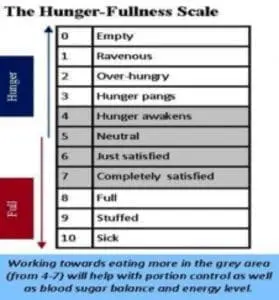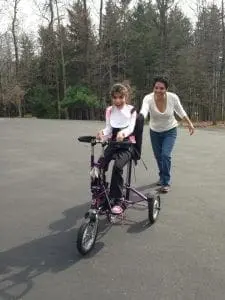Spring into Good Health

Spring into Good Health
Now that we are almost out of winter and headed for spring, we can concentrate on how we can get our bodies into shape. It may even have been a “left over” resolution you haven’t gotten around to yet!
If achieving a healthy lifestyle is your goal, start making small changes today.
More importantly, ask yourself:
- What short-term goals can you set up to accomplish your ultimate goal?
- Are my short-term and long-term goals realistic?
- What are your current healthy habits? Nutrition? Physical Activity? Nutrition?
- How often do I practice my healthy habits?
- Do my healthy habits outweigh the habits that are keeping me from moving forward?
- What’s stopping me from instilling more healthy habits?
Using S.M.A.R.T to establish your goals will keep you on track and accountable.
Specific
Measurable
Attainable/Achievable
Realistic/Relevant
Time based
Example: Ultimate/long-term goal: Live a healthy lifestyle by losing 10-20% of my current body weight over the next year, and to reduce the amount of medication I am taking to control my chronic health diseases (high blood pressure, high cholesterol, diabetes and asthma).
S.M.A.R.T goals to achieve ultimate/long-term goal:
- Nutrition goal: Do not skip breakfast. For the next two weeks I will consume a minimum of three, portion controlled, food groups for breakfast.
- Physical activity goal: I will walk in place during commercial breaks, when I am watching my favorite T.V. show three nights a week.
- Behavior goal: Stay positive while I am changing the above behaviors.
It’s a great idea to combine physical activity and good eating habits to achieve a healthy lifestyle and body weight. Sometimes, it is much easier said than done.
If we can combine the two, they can reduce the risk for developing serious health conditions. It can also manage current health conditions, so they do not worsen over time. Plus, when the two are combined, it makes our weight management journey a bit easier.
Aim to focus on modifying all of your your nutrition, physical activity and behavior goals as you make progress.
Nutrition
When it comes to nutrition, remember that a diet does not work. A lifestyle change is what makes your health goals permanent and sustainable.
When meal planning, use balance and moderation to control portions. This allows you to fit all foods into your meal plan.
https://www.parentingspecialneeds.org/article/benefits-of-special-diets-for-special-needs-children/
Balance
Balance what you eat and drink with your activity level. Pay attention to the calories you are consuming. If you consume higher-calorie foods, balance this with lower-calorie foods.
Example: Higher calorie food = piece of fried chicken + Lower calorie food(s) = steamed vegetables and/or a salad + piece of fresh fruit.
Moderation
Learn how to eat until you are satisfied, not stuffed. It takes twenty minutes for your stomach to send signals to your brain to notify you if you are still hungry, satisfied or stuffed.
Avoid extra helpings, splurging, ‘all-you-can-eat” buffets and slow down your pace of eating. Put down your utensils in between each bite, chew food thoroughly and sip water before, during and after your meal. Plate your meal in proper portions and take your time eating. Learn how to savor the aroma, texture, and flavor and how it is feeding your body.
If you are still hungry after twenty minutes, consume a fresh piece of fruit and/or non-starchy vegetables (green beans, carrots, broccoli, asparagus, salad, etc.).
https://www.parentingspecialneeds.org/article/dinners-on-how-to-cook-once-and-feed-all-eaters/
Variety
Choose a wide variety of foods: fruits, vegetables, whole grains, poultry, lean meat, seafood, eggs, beans, peas, nuts, seeds and low-fat dairy. This helps you to get all the nutrients your body needs.
- Vary the color: aim for more than one color on your plate
- Vary the flavor: sour, sweet, bitter and spicy
- Vary the texture: crunchy, soft, smooth
- Vary the preparation method: cooked versus raw
Physical Activity
When you are looking for ways to incorporate physical activity, it can be anything that gets your body moving.
Use the F.I.T.T acronym when establishing your physical activity goals.
Frequency-how often you are engaging in physical activity.
- End goal: 5 or more days a week.
Intensity- how hard your heart and muscles are working
- Last one to increase. Slowly work on increasing frequency and time first.
Time- length of time you are engaging in physical activity
- End goal: > 150 minutes a week of moderate intensity cardiovascular activity.
Type- cardiovascular, strength, flexibility/stretching and work/lifestyle activity
- Starting with cardiovascular/aerobic activity is encouraged. It will aid in burning fat and building muscle.
There are four types of physical activity:
Cardiovascular/aerobic:
When the body’s large muscles move in a rhythmic manner for a sustained period of time and the heart beats faster than usual.
- Examples include aerobic classes, swimming, running, walking, kickboxing, dancing and cycling
Strength:
Causes the body’s muscles to work or hold against an applied force or weight. This includes resistance training and lifting weights.
- Resistance can be generated using elastic bands, handheld weights, or body weight.
- Other unconventional modes include yoga, Pilates, and utilizing water buoys in water aerobics
Flexibility:
Form of physical exercise in which a specific skeletal muscle (or muscle group) is deliberately stretched along the length of the muscle in order to improve the muscle’s elasticity.
- The result is a feeling of increased muscle control, flexibility, and range of motion.
- Stretching is also used therapeutically to alleviate cramps.
https://www.parentingspecialneeds.org/article/family-factor-five-making-time-fitness/
Work and Lifestyle:
Movements you do at work or at home through normal, everyday activity.
- Work activity might include taking the stairs, walking to the other side of the building to speak with a co-worker, or participating in a walking meeting.
- Lifestyle activities might include mowing the lawn, mopping floors, social dancing and washing the car.
Behavior
We know that we need to make changes, but the hardest part is making it happen. Even when we’re strongly motivated, adopting a new, healthy habit — or breaking an old one — can be terribly difficult.
When it comes to weight management, people become wary of even starting because of past failures. The thought is, “I’ve been there and done that and it didn’t work. Why try again?” They fail to ask themselves, “Why didn’t it work?” They could have been following a fad diet, starving themselves, consuming weight loss pills and/or shakes, etc. Plus, weight gain didn’t happen over-night, but for some reason people expect weight loss to happen very quickly.
Usually if you lose weight quickly, you will gain it back. Sometimes the weight gained back is more than when you started.
As mentioned before, setting goals will help you make those proper behavior changes to stay on track.
You have to be mentally ready for change. Starting a new behavior on a whim is not the answer.
Determine where you are in the stages of change:
- Pre-contemplation. At this stage, you have no conscious intention of making a change.
- Contemplation. In this stage, you are aware that the behavior is a problem and are considering doing something about it, but you still aren’t committed to taking any action.
- Preparation. At this stage, you know you must change, believe you can, and are making plans to change soon — say, next month.
- Action. At this stage, you’ve changed — and you’ve begun to experience the challenges of life without the old behavior.
- Maintenance. Once you’ve practiced the new behavior change for at least six months, you’re in the maintenance stage. Now you’re working to prevent relapse and integrate the change into your life.
When you are mentally ready, this is when you are the most successful.
Remember, if you want credible nutrition advice that is tailored to meet your nutritional needs, seek out a registered dietitian to help you through your weight loss journey.
Receiving nutrition and healthy eating advice from someone that is not a registered dietitian, is like going to the dentist when you have a broken arm. It’s not going to help you and why would you do that to yourself?![]()
Christina Bartlett RD, LD is a Registered Dietitian and the owner of Everything In Moderation. Dedicated to providing nutrition information that is tailored to the individual.
Image courtesy our Facebook F
More Fitness Fun
- The 7 Habits of Highly Successful Fitness Programs
- Looking for a Fun Family Exercise? How About Parkour!
- Fitness Equipment Worth Buying
- Fitness Gift Guide
- Come Bearing Gifts and Wearing Them Too! Technology Ideas for Your Family and Friends
- Gift Guide from the Fitness Guy
- 4 Exercise Progressions, 5W’s, and an H
- The Folly of Fitness Focus a User’s Guide
- Fitness Challenge
- Waving Not Drowning: The Process of Making Fitness Fun
- Five Fitness Facts for a Fitter Fall
- Fitness Fun: Incorporating Fitness into the Classroom
- Do You Struggle With Planning Healthy Meals for Your Family?
This post originally appeared on our March/April 2015 Magazine





